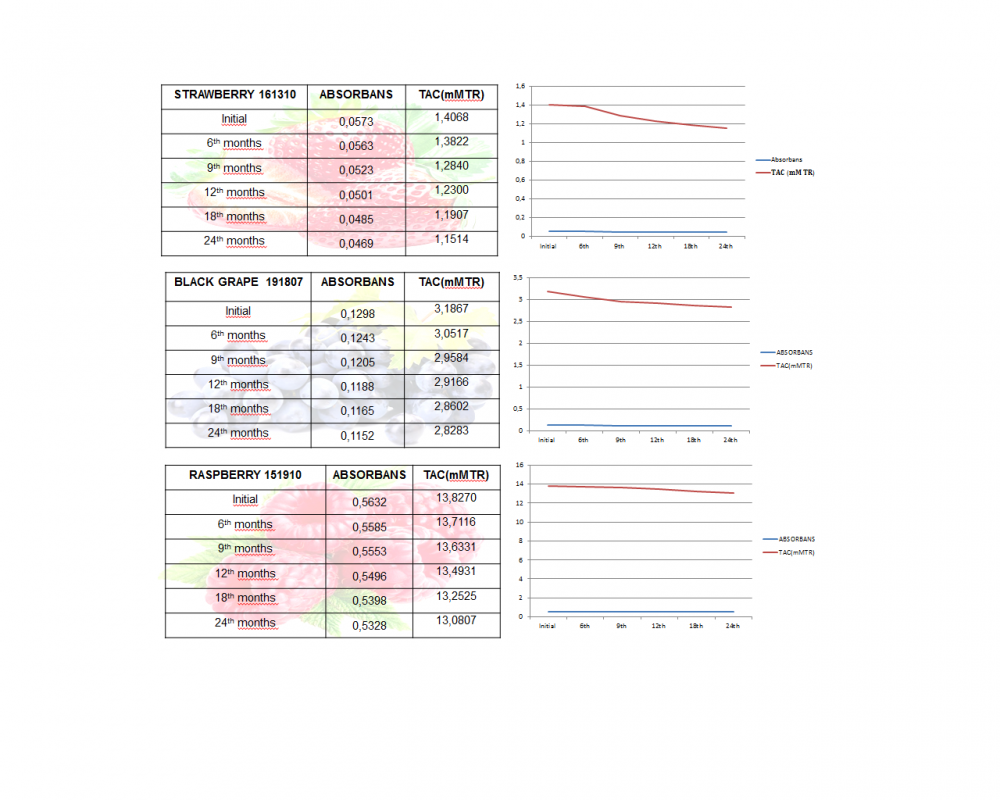JOURNAL 3090
Records of Agricultural and Food Chemistry
Year: 2024 Issue: 3 Special Issue: Abstracts 3rd. TCS, International Food Chemistry Congress February 29-March 03,2024 Antalya Türkiye
p.67 - 67
Viewed 921 times.
GRAPHICAL ABSTRACT

ABSTRACT
Flavors are components with smell and taste, which are formed by formulating chemical molecules that are more than one volatile or non-volatile. These include aldehydes, ketones, ethers, esters, etc. chemicals as main components. The purpose of this study is to examine the alteration of berry group flavors shelf lives due to oxidation using the CUPRAC method. In the Turkish Food Codex, flavors are defined as 'flavoring substances, flavor preparations, heat treatment flavors, incense flavors that are not intended for consumption, are used to give taste and/or scent, or are added to foods for modification purposes'. It is expressed as a product made or composed of flavor precursors or other flavors or mixtures thereof. In aromas, components with antioxidant capacity are used to preserve the odor and taste characteristics of the aroma in a more stable manner and to ensure that the odor and taste characteristics remain intact throughout the shelf life, depending on the type of the final product [1]. In this study, antioxidant-free flavors were selected and their antioxidant capacities were examined. Three berry flavoring groups named strawberry 161310, black grape 191807, raspberry 151910 were selected. Of these selected flavorings, 6-9-12-18 and 24. Months aging was performed using a microtest MIT-120 device under a light intensity of 6000 lux and 40 °C. The antioxidant capacities of the aged flavorings were determined by CUPRAC method. For the CUPRAC method, 10-2 M Cu2+, 1 M NH4Ac, 7,5×10-3 M neocuproin solutions were prepared with EtOH. 1 mL of each solution was taken, and 3 mL of the mixture was made and 1.1 mL of EtOH antioxidant mixture was added to this mixture. The resulting mixture is infused for 30 min. It was kept at room temperature and absorbance values were measured with UV-VIS spectrophotometer device at 450 nm [2]. The antioxidant capacities of the aromas determined by the CUPRAC method were examined with a UV-VIS device depending on the oxidation of the raw materials. Berry groups contain monoterpene and sesquiterpene volatile components such as limonene and linalool, which undergo oxidation. Terpenes, which are unsaturated hydrocarbons containing one or more C=C double bonds, are highly reactive with various oxidation products such as ozone, nitrate, and hydroxyl radicals. Terpenes have been recognized as important precursors of photochemical ozone formation [3]. As a result of the study, it was observed that the decrease in antioxidant capacities was not high in the berry groups, as seen in the graphs. It has been observed that terpene compounds in berry groups are not as easily oxidized as in citrus groups under the influence of gases in the air, temperature and light. Terpene compounds should not be exposed to factors that cause oxidation. Otherwise, oxidized taste profiles will occur, causing loss of taste and smell.
KEYWORDS- Flavors
- Antioxidant
- UV-VIS
- CUPRAC